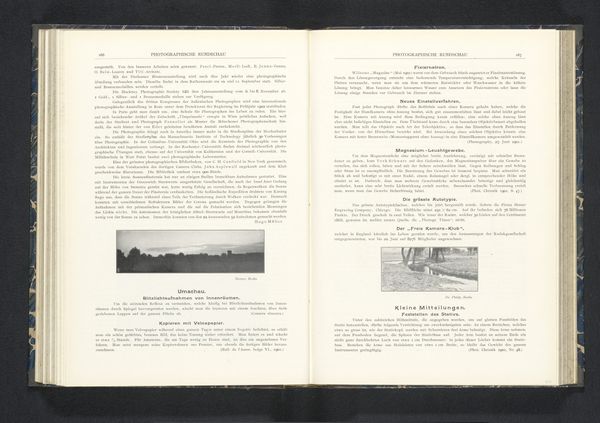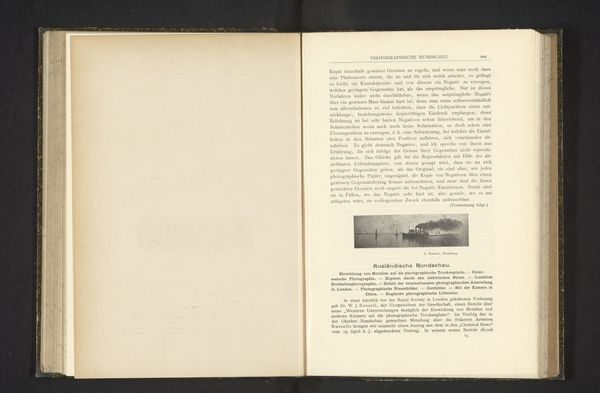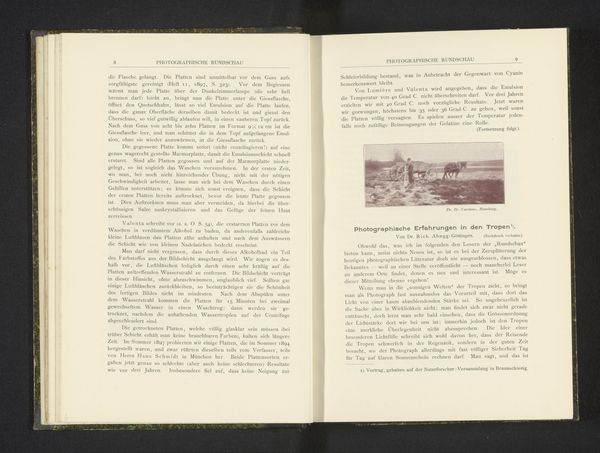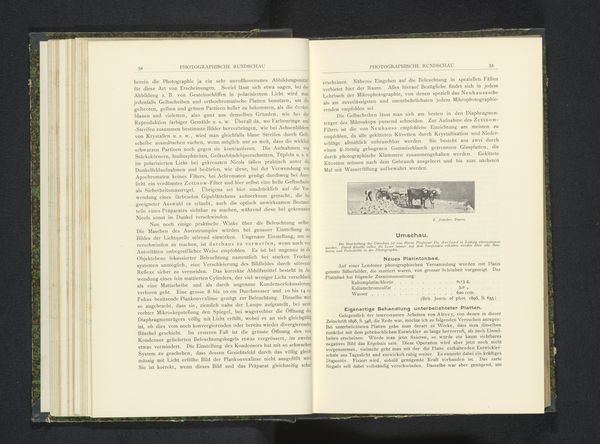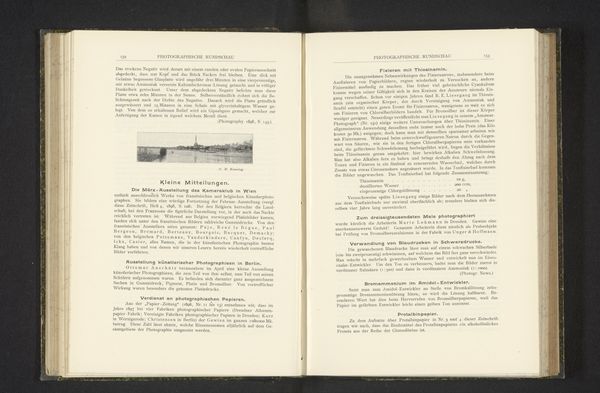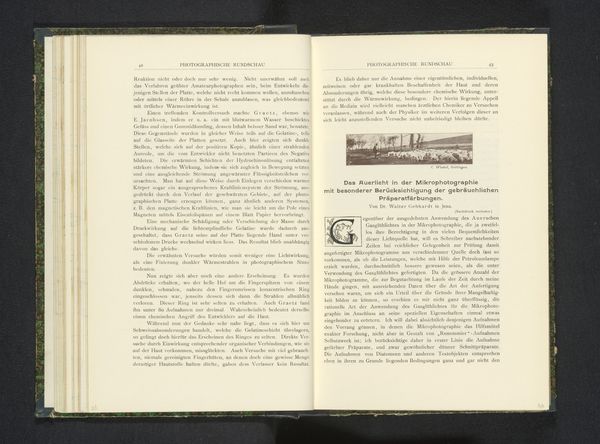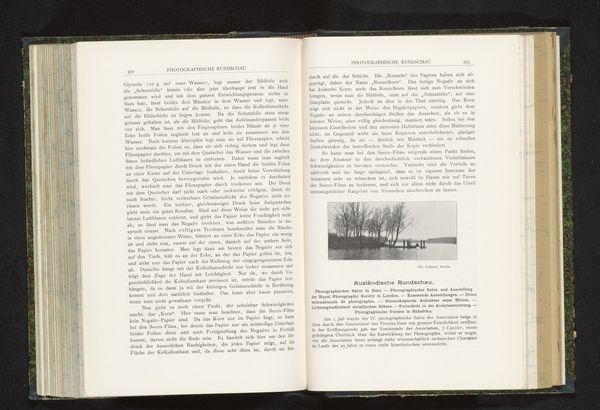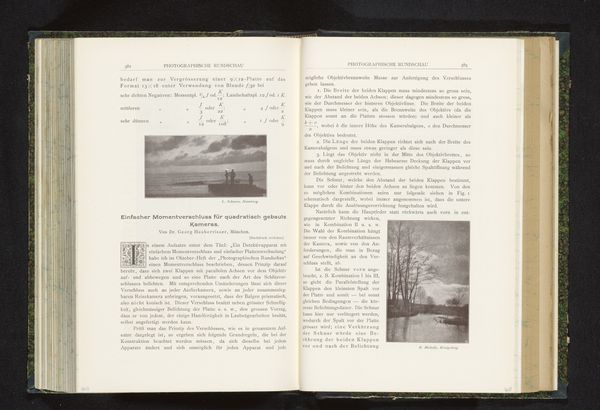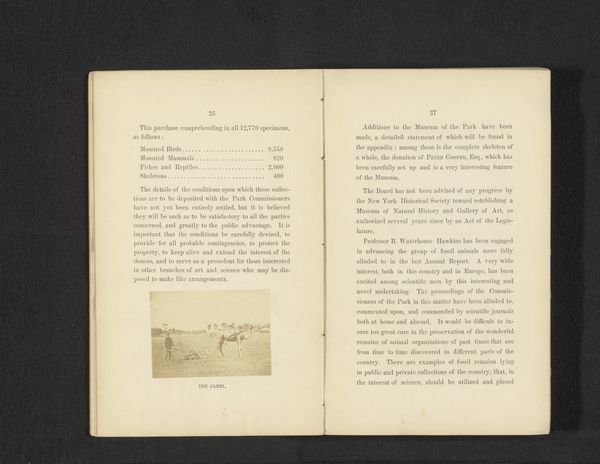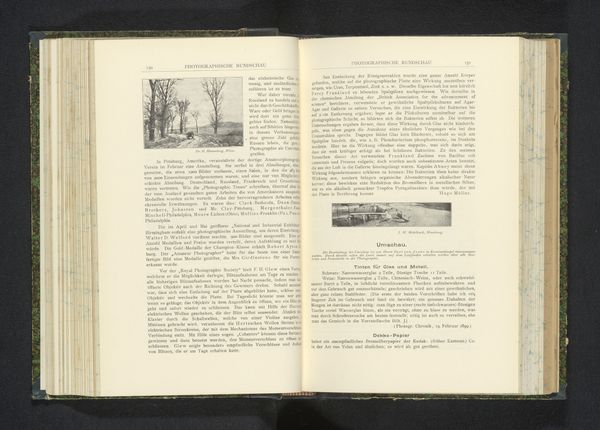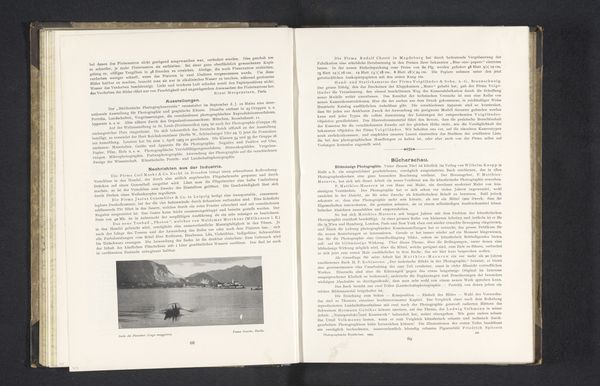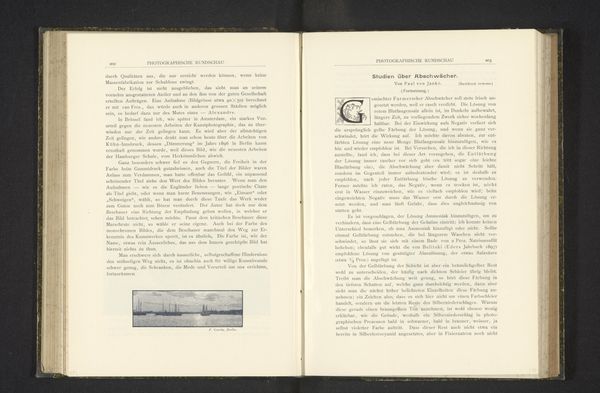
print, textile, photography
# print
#
textile
#
photography
Dimensions: height 40 mm, width 67 mm
Copyright: Rijks Museum: Open Domain
Curator: This brittle page before us holds a photographic print, bound in an anthology. "Gezicht op een winters landschap met op de achtergrond een stad," or "View of a winter landscape with a city in the background," made sometime before 1899 by the intriguing artist, Br. Carstens. What whispers to you from this monochrome glimpse of yesteryear? Editor: Bleakness, Curator, but in a strangely inviting way. There's a vastness to it; the landscape bleeds into a clouded sky. That distant city, almost lost in the haze, promises warmth, but the immediate impression is one of isolation, a solitude imposed by the season, and potentially other invisible social and political boundaries too. The horizon line being the focus brings emphasis to what separates us and not unites us. Curator: Solitude is a fascinating lens through which to view this, particularly given its creation. The image being nestled within this collection, in juxtaposition with the textual landscape and discussion of photography, perhaps seeks to speak of a loneliness in the medium. Or perhaps this chosen imagery for documentation hopes to reflect the modern individual experience. Editor: Precisely! Think about who is and isn't represented here, in this moment of early photography. Landscapes like this offered an escape—aesthetic, perhaps literal for a growing bourgeois class wanting to claim experiences outside of city centers. Meanwhile, the actual, lived landscape of many—laborers, those without property—are strikingly absent. Curator: A somber point. The "romance" of winter softens in contrast when the social reality sharpens its contours. Perhaps the artist unconsciously captures the beginnings of a social fracturing. Editor: Possibly. We see glimpses and not the whole picture. The stark monochrome enhances this—it simplifies, distilling form to its barest elements and, perhaps, unintentionally, simplifies lived experience too. Curator: So much for one landscape. Looking once more before moving along to the next exhibit, what lingers for you? Editor: An invitation to truly look at landscapes, both pictorial and lived, to see past aesthetic pleasure, and to examine the sociopolitical currents hidden within their frozen surfaces. It asks "for whom is the landscape "empty?" Curator: Beautiful. For me, its testament to winter, to an echo of past landscapes, documented not only in artistic renditions such as painting, but also using photography's unique truth and perspective.
Comments
No comments
Be the first to comment and join the conversation on the ultimate creative platform.
